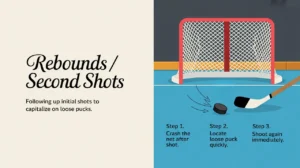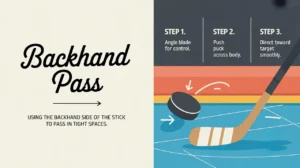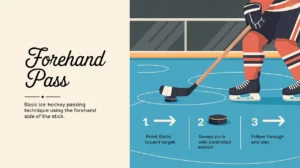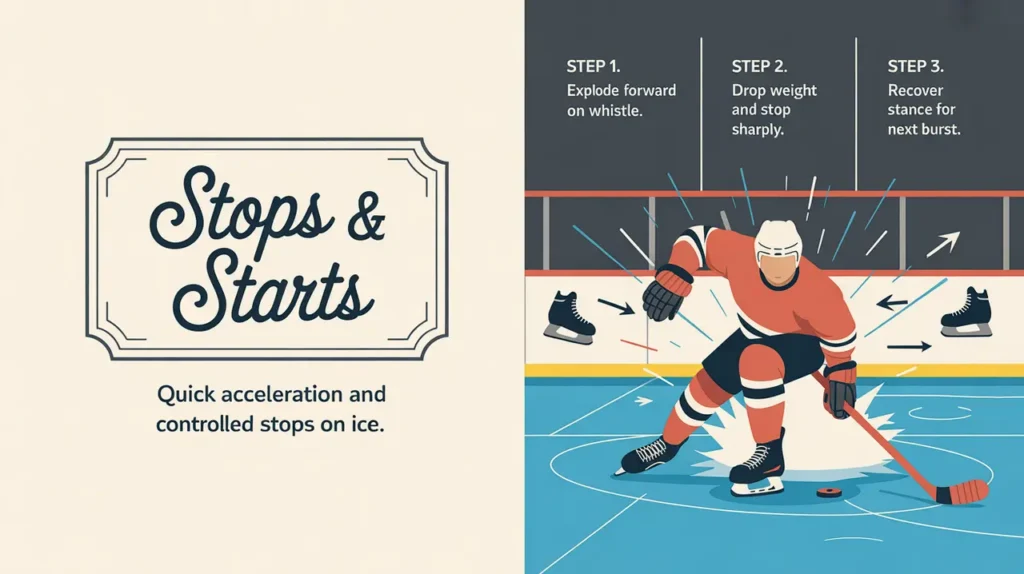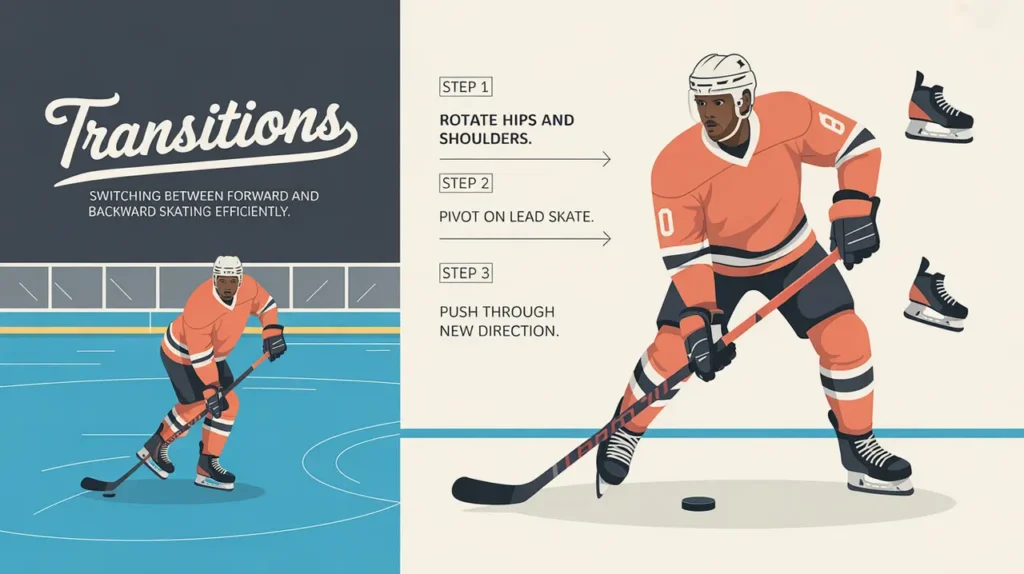Jim’s Intro to Backward Skating
Hi folks, Jim here, the only commentator who needs rearview mirrors to successfully backward skate.
What is backward skating?
Backward skating is the technique of moving smoothly and powerfully in reverse while maintaining balance, speed, and vision. It’s essential for defensemen managing gaps, forwards supporting in their zone, and anyone looking to control play without turning their back on the action.
How does it work?
Backward skating relies on balance, edge control, and efficient movement:
- Strong Base: Knees bent, hips low, chest up, and weight centered for stability.
- C-Cuts: Players push with the inside edge of one skate while gliding on the other, alternating rhythmically to build speed.
- Upper Body Control: Shoulders stay square to the play while the lower body does the work.
- Head and Eyes Up: Vision is crucial for reading incoming attackers and adjusting gaps.
- Edge Usage: Inside edges drive power; outside edges help steer and adjust direction.
- Transition Readiness: Great backward skaters can shift seamlessly into forward strides when needed.
How do you make good decisions with it?
- Maintain Good Gap Control: Use backward skating to stay close enough to pressure but far enough to react.
- Angle Attackers: Subtle edge adjustments steer opponents toward low-danger areas.
- Read the Play Early: Quick recognition helps you set the right backward pace.
- Avoid Overreaching: Stay balanced rather than lunging at puck carriers.
- Control Tempo: Adjust your backward speed to match attackers, not the other way around.
How do you master it?
Mastering backward skating requires time, patience, and technical focus. Players should isolate C-cuts, practice balance drills, and integrate transitions (like backward-to-forward pivots). Resistance work and mirror skating with partners help refine rhythm and reaction.
What does it look like when done right?
Excellent backward skating looks controlled, smooth, and alert. The skater maintains steady eye contact with the play, glides efficiently, and matches attackers stride for stride, ready to close gaps or pivot in an instant.
Commentator’s Corner
Jim’s Take
Watching a defenseman glide backward like they’re on rails is one of hockey’s quiet joys. The good ones make it look easier than it is.
Parent Tip
Encourage patience. Backward skating develops more slowly than forward, but once it clicks, everything else on defense sharpens.
Player Tip
Stay low, keep your head up, and build speed through clean edges, not frantic movement.
A Final Thought
Backward skating is control in reverse. Master it, and you’ll own the space between you and your opponent.


